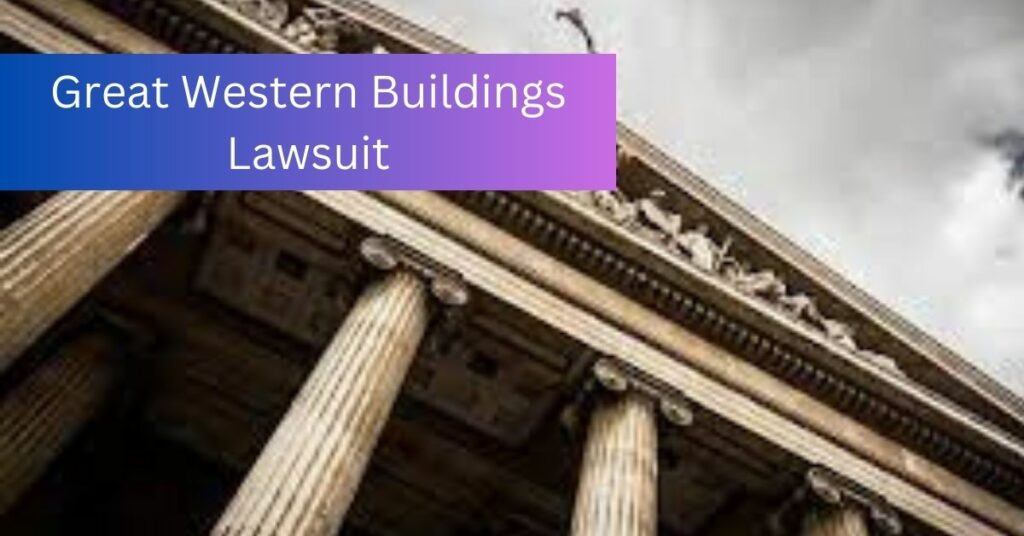Great Western Buildings Lawsuit: An In-Depth Analysis

Introduction
The Great Western Buildings lawsuit has arisen as a milestone case in the domain of property regulation and corporate obligation. This complex legal fight, involving different gatherings, intricate legal principles, and huge financial implications, has caught the consideration of legal specialists, corporate elements, and the overall population the same. In this complete article, we will dive into the different features of the lawsuit, examining its background, the legal arguments introduced, the likely implications, and the more extensive impact on industry rehearses and regulatory systems.
Background of the Case
The foundations of the Great Western Buildings lawsuit can be followed back to a progression of situation that developed more than quite a long while. Great Western Buildings, a prominent development and land firm, was blamed for various infringement, including break of agreement, carelessness in development rehearses, and resistance with safety guidelines. The plaintiffs, a different gathering comprising individual mortgage holders, businesses, and nearby government elements, claimed that the organization’s wrongdoing brought about huge financial misfortunes and safety dangers.
The beginning of the debate was the development of a multi-utilize complex by Great Western Buildings. Initially hailed as a cutting edge improvement, the task before long became buried in discussion. Reports of inadequate development materials, dismissal for building codes, and cutting corners to facilitate consummation started to surface. These issues were purportedly linked to property harm, safety chances, and a radical decline in the worth of the properties.
Legal Arguments and Proceedings
The legal fight that followed was complex, involving a variety of charges and protections. The plaintiffs’ essential conflict was that Great Western Buildings lawsuit had neglected to satisfy its contractual commitments, both with regards to quality and safety guidelines. They contended that the organization’s activities comprised a break of agreement as well as carelessness and a barefaced negligence for public safety.
Then again, Great Western Buildings’ safeguard hinged on challenging the cases of carelessness and agreement breaches. They battled that all development work complied with the significant codes and guidelines and that any issues were either misrepresented or inconsequential to their workmanship. Besides, they contended that a few plaintiffs had neglected to appropriately maintain their properties, which added to the harms.
As the case advanced through the legal framework, it involved a complete examination of building codes, contractual arrangements, and industry guidelines. Master observers from the fields of development, land, and safety were called upon to give declaration, further complicating the proceedings.
Financial and Safety Implications
The financial stakes of the Great Western Buildings lawsuit were fantastic. The plaintiffs looked for remuneration for different harms, including fix costs, property depreciation, and other related misfortunes. The complete total requested in harms was in the many millions, a figure that highlighted the seriousness of the supposed wrongdoing.
Past the financial repercussions, the case featured basic safety concerns. The charges of using unsatisfactory materials and ignoring safety codes raised cautions about the dangers to occupants and businesses in the impacted properties. This part of the lawsuit highlighted the obligation of development firms with comply to safety norms and the possible outcomes of their inability to do as such.
Industry Impact and Regulatory Response
The Great Western Buildings lawsuit had an expanding influence across the development and land industries. It incited a reassessment of industry rehearses, especially concerning consistence with building codes and contractual commitments. Many firms started to scrutinize their methodology to keep away from comparative legal snares, leading to a far reaching accentuation on quality control and regulatory consistence.
The lawsuit additionally influenced regulatory bodies and officials. In response to the issues raised, there were calls for stricter requirement of building codes and more thorough oversight of development projects. A few purviews started considering corrections to their regulations and guidelines to close provisos and improve responsibility in the development area.
Conclusion
The Great Western Buildings lawsuit fills in as a useful example about the significance of moral business rehearses, adherence to safety norms, and the possible legal results of carelessness and contractual breaches. As the case continues to unfurl, its implications will probably reach out a long ways past the gatherings straightforwardly involved, influencing legal points of reference, industry guidelines, and regulatory strategies. It remains as a critical case concentrate on in the intersection of regulation, business morals, and public safety, with examples that resound across different areas and disciplines.
